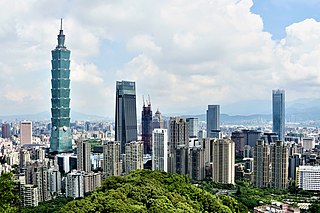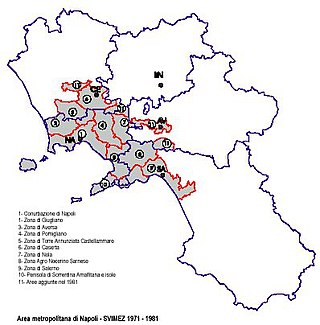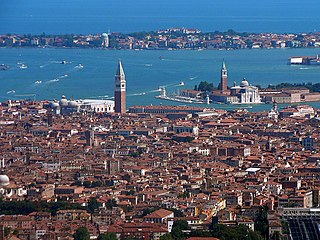
Demographic features of the population of Italy include population density, ethnicity, education level, health of the populace, economic status, religious affiliations and other aspects.

Milan is a city in Northern Italy, capital of Lombardy, and the second-most populous city proper in Italy after Rome. The city proper has a population of about 1.4 million, while its metropolitan city has 3.26 million inhabitants. Its continuously built-up urban area is the fourth largest in the EU with 5.27 million inhabitants. According to national sources, the population within the wider Milan metropolitan area, is estimated between 8.2 million and 12.5 million making it by far the largest metropolitan area in Italy and one of the largest in the EU.

Lombardy is an administrative region of Italy that covers 23,844 km2 (9,206 sq mi); it is located in the northern-central part of the country and has a population of about 10 million people, constituting more than one-sixth of Italy's population. Over a fifth of Italy's gross domestic product (GDP) is produced in the region.

A metropolitan area or metro is a region consisting of a densely populated urban agglomeration and its surrounding territories sharing industries, commercial areas, transport network, infrastructures and housing. A metropolitan area usually comprises multiple principal cities, jurisdictions and municipalities: neighborhoods, townships, boroughs, cities, towns, exurbs, suburbs, counties, districts and even states and nations in areas like the eurodistricts. As social, economic and political institutions have changed, metropolitan areas have become key economic and political regions.

A comune is an administrative division of Italy, roughly equivalent to a township or municipality. It is the third-level administrative division of Italy, after regions (regioni) and provinces (province). The comune can also have the title of città ('city').

An urban area, built-up area or urban agglomeration is a human settlement with a high population density and an infrastructure of built environment. This is the core of a metropolitan statistical area in the United States, if it contains a population of more than 50,000.

Northern Italy is a geographical and cultural region in the northern part of Italy. It consists of eight administrative regions: Aosta Valley, Emilia-Romagna, Friuli-Venezia Giulia, Piedmont, Liguria, Lombardy, Veneto and Trentino-Alto Adige. As of 2014, its population was 27,801,460. Rhaeto-Romance and Gallo-Italic languages are spoken in the region, as opposed to the Italo-Dalmatian languages spoken in the rest of Italy. The Venetian language is sometimes considered to be part of the Italo-Dalmatian languages, but some major publications such as Ethnologue and Glottolog define it as Gallo-Italic.

The Paris metropolitan area is a statistical area that describes the reach of commuter movement to and from Paris, France and its surrounding suburbs.
The larger urban zone (LUZ), or functional urban area (FUA), is a measure of the population and expanse of metropolitan and surrounding areas which may or may not be exclusively urban. It consists of a city and its commuting zone outside it.

The Copenhagen metropolitan area or Metropolitan Copenhagen is a large commuter belt surrounding Copenhagen, the capital of Denmark. It includes Copenhagen Municipality, Frederiksberg and surrounding municipalities stretching westward across Zealand. It has a densely-populated core surrounded by suburban settlements.

A metropolis is a large city or conurbation which is a significant economic, political, and cultural area for a country or region, and an important hub for regional or international connections, commerce, and communications.

The Naples metropolitan area, or Greater Naples, is a metropolitan area in Campania, Italy, centered on the city of Naples.

There are eleven metropolitan regions in Germany consisting of the country's most densely populated cities and their catchment areas. They represent Germany's political, commercial and cultural centres. The eleven metropolitan regions in Germany were organised into political units for planning purposes.

In urban planning, a historic core city or central city is the municipality with the largest 1940 population in the present metropolitan area. This term was retired by the US census bureau and replaced by the term principal city, which can include historic core cities and post WW2 cities. Metropolitan areas are no longer considered monocentric, but had become polycentric due to suburbanization of employment. A historic core city is not to be confused with the core of a metropolitan area which is defined as an urban area with a population of over 50,000 by the US census bureau. Historic core cites in the United States often times have higher detached single family housing rates, lower density and fewer jobs than surrounding satellite cities and suburbs.. A central city is usually the first settlement established in an urban region before the outlying districts came into existence, later in history. These cities typically contain less economic activity and more crime than their surrounding areas. Central cities often form the regional downtowns of metro areas. The term is used mainly in US context, although since the 1970s it has also become relatively common in Canada and, to a lesser extent, Europe and Australia.

The Metropolitan City of Milan is a metropolitan city in the Lombardy region, Italy. It is the second most populous metropolitan city in the nation after the Metropolitan City of Rome. Its capital is the city of Milan. It replaced the province of Milan and includes the city of Milan and other 133 municipalities or communes (comuni). It was first created by the reform of local authorities and then established by the Law 56/2014. It has been operative since 1 January 2015.

The Metropolitan City of Turin is a metropolitan city in the Piedmont region, Italy. Its capital is the city of Turin. It replaced the Province of Turin and comprises 312 municipalities (comuni). It was created by the reform of local authorities and established by the Law 56/2014. It has been officially operating since 1 January 2015.

The Metropolitan City of Venice is a metropolitan city in the Veneto region, Italy, one of ten metropolitan cities in Italy. Its capital is the city of Venice. It replaced the Province of Venice in 2015 and includes the city of Venice and 43 other municipalities (comuni). It was first created by the reform of local authorities and then established by Law 56/2014. The Metropolitan City of Venice is headed by the Metropolitan Mayor and the Metropolitan Council. Since 15 June 2015, as the new mayor of the capital city, Luigi Brugnaro is the first mayor of the metropolitan city.





















